Government's paramilitary groups in Northern Ireland assessment in short
- Published
The government has published an official assessment of paramilitary activity in Northern Ireland.
The report, jointly drafted by the Police Service of Northern Ireland and MI5, was commissioned following the murder in August of Belfast man Kevin McGuigan Sr when a political crisis was promoted by the police's belief that current IRA members were involved in the killing.
While the report did not cover dissident republicans, its authors found that these groups posed the most serious current terrorist threat in Northern Ireland.
Read the report in full, external
Here are some of the key points from the report.

The report, dated 19 October 2015, was jointly drafted by the PSNI and MI5
While all the main republican and loyalist paramilitary groups from the Troubles still exist, their leaderships are, "to different degrees", committed to peaceful means
They are still organised along militaristic lines, but labels like "brigades" or "army council" make them "look more prepared for a campaign of violence than they are"
None of these groups is planning or conducting terrorist attacks, and even if they wanted, they would be "unable to resurrect the capability demonstrated at their peak"
The most serious current terrorist threat comes from dissident republicans
Individual members of paramilitary groups still represent a threat to national security and are engaged in organised crime
None of the groups has complete control over its members, and regular unsanctioned activity includes "behaviour in direct contravention of leadership instruction"
Provisional IRA (PIRA)
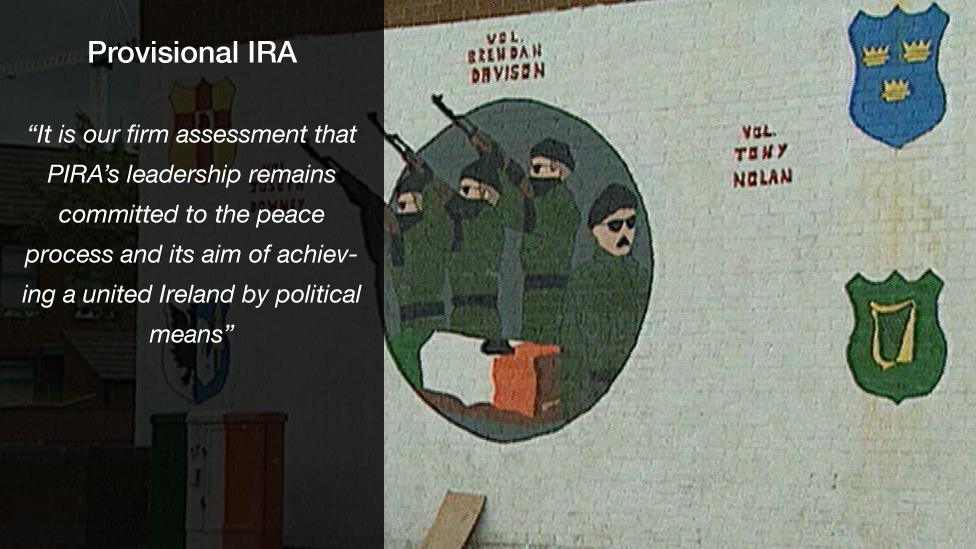
The Provisional IRA structures, including its ruling 'army council' remains in existence though in a much reduced form and its leadership remains committed to the peace process
"PIRA members believe that the Provisional Army Council oversees both PIRA and Sinn Féin with an overarching strategy - we judge this strategy has a wholly political focus"
There have been "very limited indications of dissent", which have been addressed effectively by the leadership
Some members are involved in gathering information such as details of dissident republican activity and attempts to identify covert human intelligence sources
Small number are involved in the storage of weaponry to prevent it falling into dissident republican hands, while individual members remain involved in criminal activity like large-scale smuggling.
Kevin McGuigan murder investigation is ongoing but the report's authors judge that Chief Constable George Hamilton's assessment of 22 August "remains accurate"
Irish National Liberation Army (INLA)
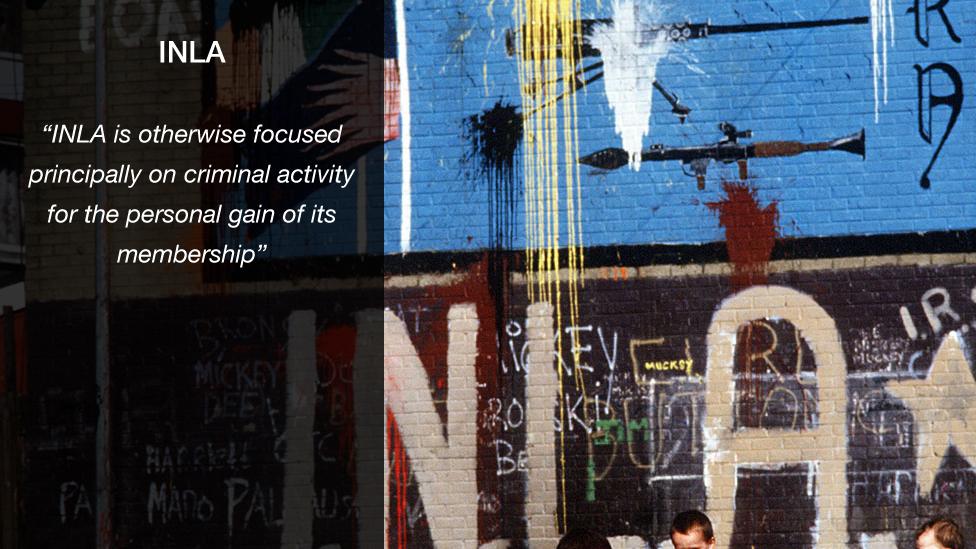
Some co-operation between INLA members and dissident republicans, but it is "otherwise focused principally on criminal activity for the personal gain of its membership"
Structures still exist but there is little indication of centralised leadership control, so groups across Northern Ireland operate independently of each other
There are indications it is attempting to recruit new members
INLA members are still heavily involved in criminality
While it decommissioned arms in 2010, it continues to have access to some weapons
Ulster Volunteer Force (UVF) and Red Hand Commando
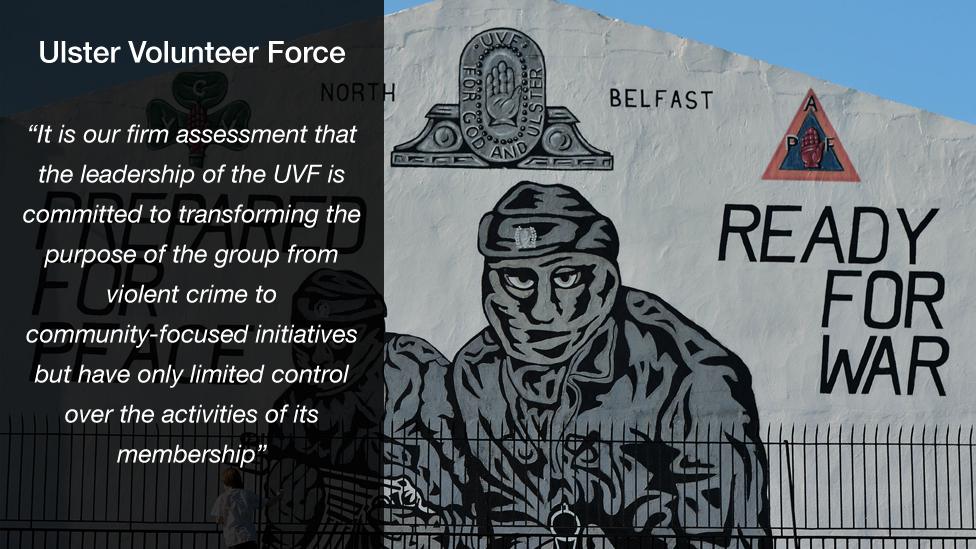
Structures remain in existence, with some indications of recruitment
Leadership committed to transforming from violent crime to community-focused initiatives
However, it has only limited control over the activities of its membership
In some cases, UVF members are heavily involved in violence and crime
A very small number of members have taken active roles in loyalist politics with the Progressive Unionist Party
However, a larger number, including some senior figures, are extensively involved in organised crime including drug dealing, extortion and smuggling
While it took part in decommissioning in 2009, it continues to have access to some weapons
Ulster Defence Association (UDA) and Ulster Freedom Fighters (UFF)
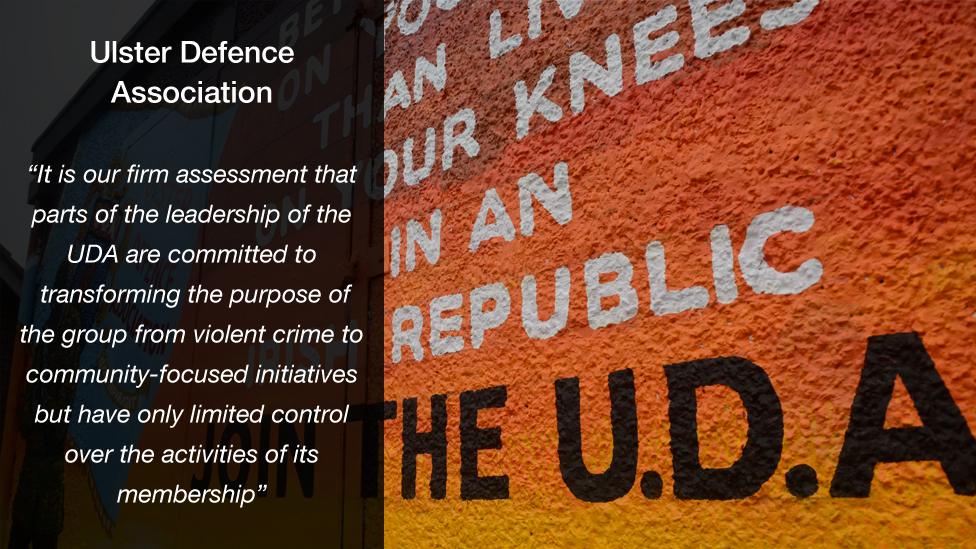
"Parts of" the UDA leadership are committed to transforming from violent crime to community-focused initiatives
However, they have only limited control over members' activities
Some members are heavily involved in violence and crime
While UDA structures remain in existence, they have become increasingly fragmented
It is split into a number of discrete geographical areas, each with its own structures, which act almost completely autonomously
The UDA took part in decommissioning in 2010 but continues to have access to some weapons
A very small number of members are part of the political party Ulster Research Political Group, but others have been resistant to change and remained active in criminality and violence
There has been an increasing number of paramilitary-style assaults in recent years, one of which resulted in a fatality - a murder investigation is ongoing
The UFF no longer exists
South East Antrim UDA
A separate entity from the mainstream UDA that retains similar structures
Its membership is engaged in the same types of criminal and violent activity
During the Union flag protests in 2012, individual members were believed to have been involved in serious disorder in the Carrickfergus area
Loyalist Volunteer Force
Exists only as a criminal group in Antrim and mid-Ulster
- Published21 October 2015
- Published20 October 2015
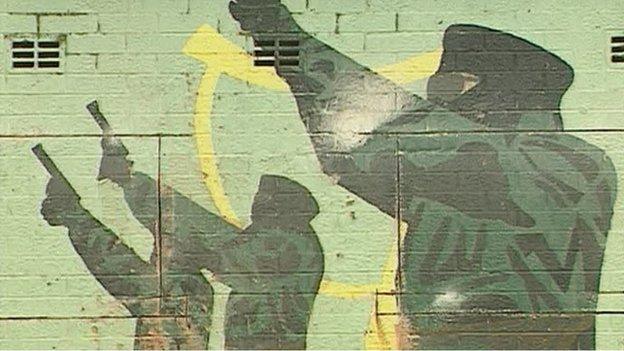
- Published20 October 2015
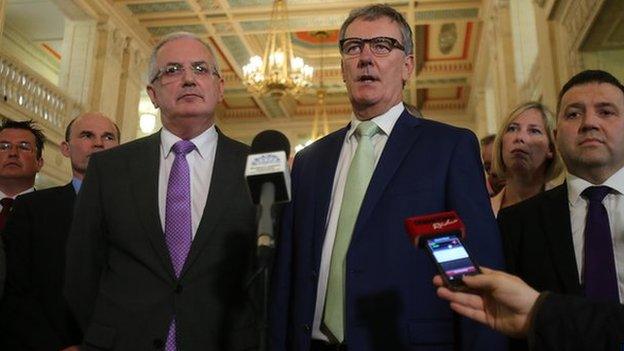
- Published13 November 2015
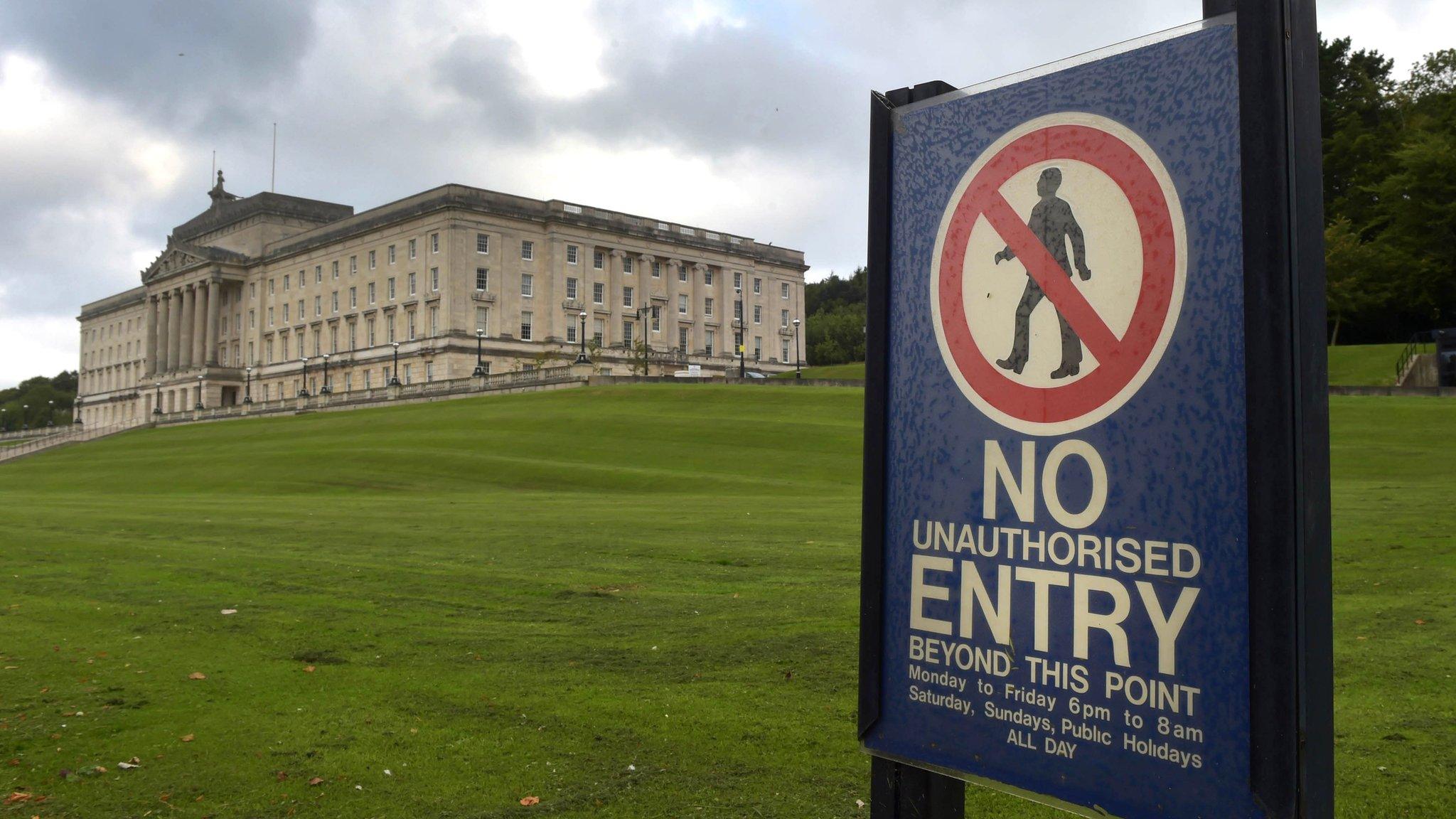
- Published22 August 2015
